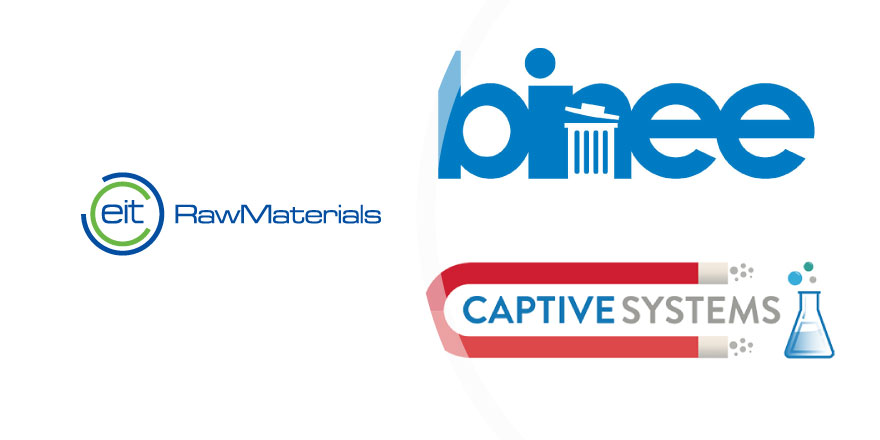Focus on two EIT RawMaterials-supported ventures

EIT RawMaterials is one of the newest members of the EIT Community, but already has dozens of high-quality partners helping to make a positive impact in the field.
Here we focus on two start-ups supported by EIT RawMaterials.
Binee is an ad-sponsored e-waste collection system
By motivating users to bring back old electronic devices, binee hopes to increase the collection rate and create transparency along the secondary value chain. To meet the requirements from the EU Commission to reach higher collection and recycling rates for Waste Electrical and Electronic Equipment (WEEE), and especially for small electronic devices, retailers and recyclers need to attract customers to bring back their old devices.Small devices such as hard drives, displays, permanent magnets or batteries contain considerable amounts of critical raw materials, including Co, Ga, Li, REE and Ta. In addition to long-term established take-back solutions for WEEE, Binee could increase the collection rate by using a customer centric approach and increasing transparency along the value chain.
This might complement existing recycling processes as well as delivering input streams to new recycling approaches developed by partners of EIT Raw Materials.
Captive Systems developed technology to recover metal
Captive Systems, a spin-off company of the Politecnico di Milano (Italy), has developed a technology for metals recovery, water management and treatment, in order to make the hydrometallurgical industry, competitive, environmentally sustainable and scalable.The technology is based on the use of magnetic nanoparticles, made up of a core containing a ferromagnetic material and an outer coating containing a mixture of a lipophilic compound and a hydrophilic compound, which makes the nanoparticle stable in water and, simultaneously, capable of adsorbing/emulsifying large amounts of hydrophobic/lipophilic compounds.
This makes the particles usable as “magnetic fluids” for the removal of hydrocarbons and metal ions from wastewater and electrolytes. The technology has been proved for the recovery of metals (precious or not metals, rare earth elements) from spent and process solutions, but also from contaminated environment; it allows to generate secondary metallic raw materials from industrial waters in an eco-sustainable process.
The main target sector for the use of magnetic fluids in metallurgy is constituted by the electroplating industry, in particular: surface treatments with wet processes and not, especially with precious metals, chemicals production for the galvanic industry and recovery of metals from e-waste, as well as the steel industry (blast furnaces and coke ovens, electric furnaces and ladle furnaces, continuous casting, rolling mills).
These sectors require efficient management of wastewater and of processing water from electroplating industry to recover metals and chemicals.
Catch up with the latest news from the EIT Community in the Newsroom.
Subscribe to the EIT Newsletter to get the best of the EIT Community's news in your inbox once each month.



 Share this page
Share this page


